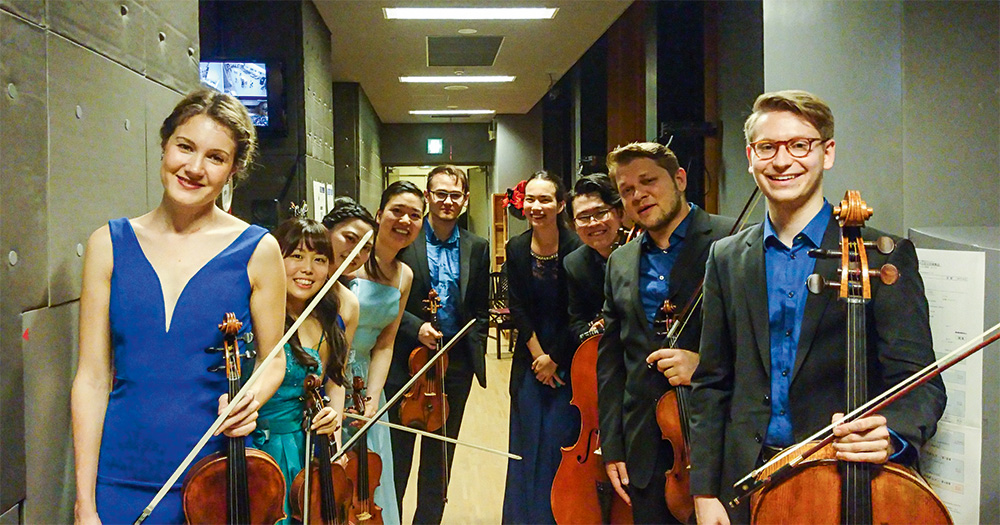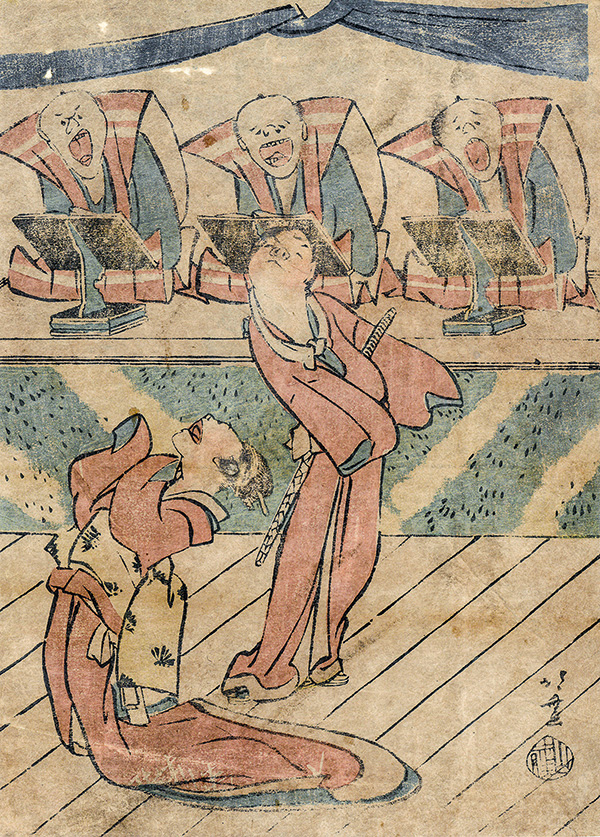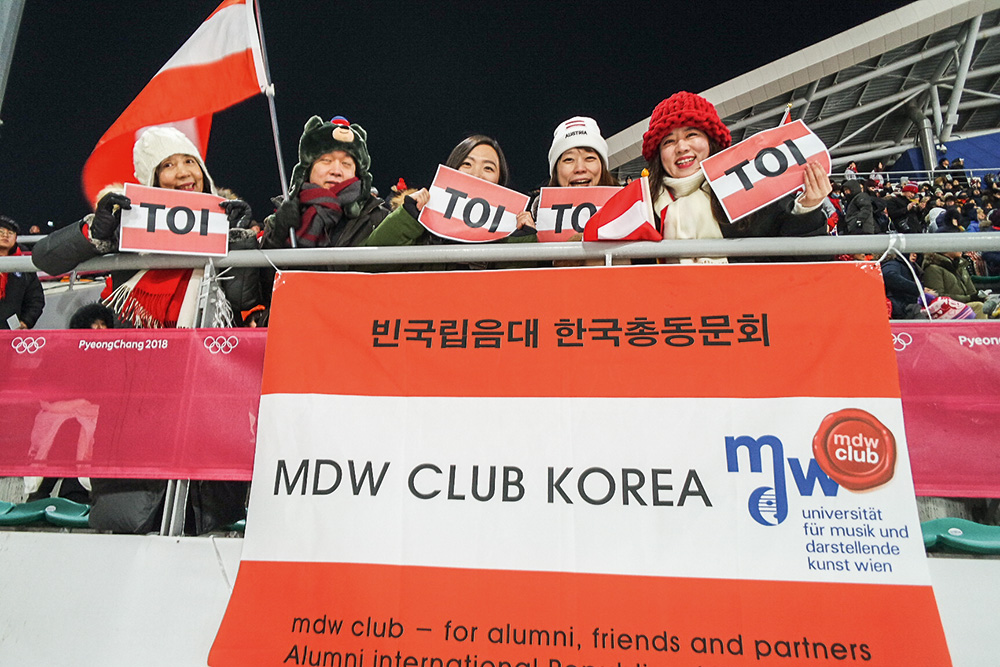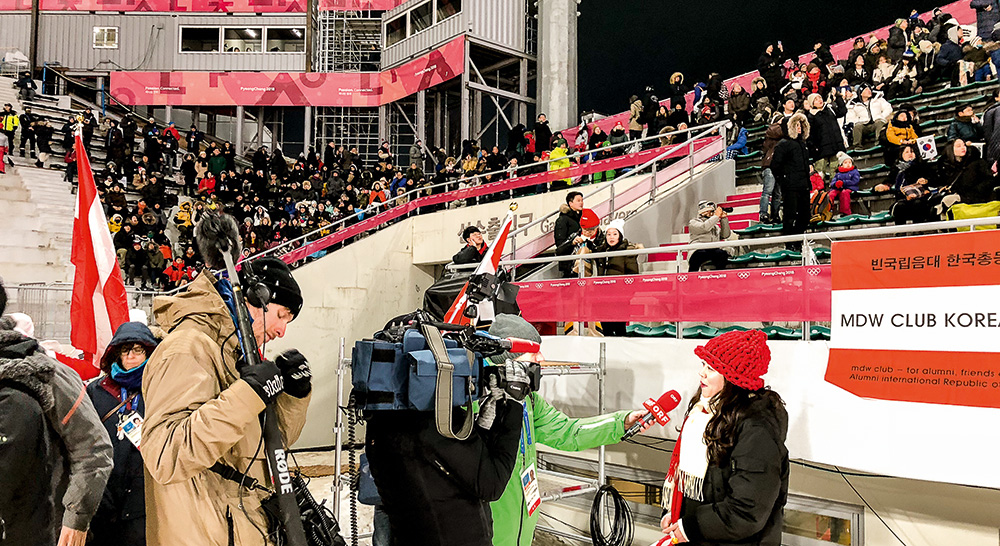The links between the mdw (including its institutional predecessors) and the Far East have long been quite close. Contact with Japan arose all the way back in the 19th century, in fact, and to this day, such contact continues to link instructors, students, and institutions in a multitude of ways.

Around 300 mdw students come from this region of the world, and around a third of that number are from Japan. mdw instructors, for their part, regularly teach at the University’s partner institutions, at which large numbers of mdw graduates likewise teach and occasionally even serve as rectors or similar. Very recent times have seen the intensification of artistic exchange in the form of concerts and staged productions. And particularly the relations with Japan, which go back as far as the 19th century, have long since become part of the mdw’s tradition. Reason enough to take a look at the nascence of modern musical training in the Land of the Rising Sun—and at the role that our university played in establishing such training.

On 4 April 1887, the Viennese newspaper Die Presse reported: “[Japanese at Vienna’s Conservatory] Mr. A. Hamao, Director of Public Education and President of the Fine Arts Commission at the Japanese Ministry of Education, who is currently residing at the Japanese Embassy in Vienna, visited the Vienna Conservatory today to look about and inform himself.” Since the institution was on Easter break at the time, it had to improvise its presentation for these foreign dignitaries, treating them to “a duet for soprano and bass, lieder, and a violin piece. Mr. Hamao and his party, led by Director Hellmesberger, thereafter viewed several teaching rooms, the library, and the museum, showed lively interest in what they saw and heard, signed their names in the guest book, and requested copies of all instructional materials and of forms relating to the Conservatory’s administration. The Japanese government intends to establish a large, state-funded music institution in Japan and to also give musically inclined young Japanese the opportunity to take an instructional course at the Vienna Conservatory.” This instructional course for Japanese students failed to materialise, but President Hamao did, during his visit, end up encountering Conservatory graduate Rudolf Dittrich (1861–1919), whom he hired in 1888 to serve as artistic director of the newly founded music school in Tokyo, a predecessor to the Tokyo Geijutsu Daigaku—today’s Tokyo University of the Arts. Dittrich remained in Tokyo—becoming known there as the “Father of European Music” and the “first true musician”—until 1894 and taught composition to students including Nobu Koda (1870–1946), who in 1891 became the first person from Japan to attend the Vienna Conservatory, studying composition, piano, and violin and graduating (under Josef Hellmesberger and with distinction) in 1895. Once returned to Japan, she proceeded to do pioneering work toward the further introduction of Western music there.
Academic Year of 2017/18
As of 28 February 2018, taken from the mdw-Online Student Listings
| Country | Students |
|---|---|
| Japan | 103 |
| Republic of Korea | 85 |
| China | 75 |
| Taiwan | 36 |
| Thailand | 4 |
| Singapore | 3 |
| Indonesia | 2 |
| Malaysia | 1 |
| Philippines | 1 |
| Total | 310 |
| Total number, all countries | 3,142 |
During the 20th century, the mdw—as its predecessor institutions, the Akademie and the Hochschule, and as today’s University—was attended by important Japanese artists. Michiko Tanaka enrolled in the opera programme in 1930, subsequently marrying the Viennese business magnate Julius Meinl II and presiding over a salon in Vienna; following the Second World War, she introduced the young conductor Seiji Ozawa to Maestro Herbert von Karajan, who subsequently took him on as his assistant.

Hisatada Otaka was enrolled in composing and conducting between 1936 and 1938. Once returned home, he established and built up the NHK Symphony Orchestra. To this day, the orchestra awards contemporary composers the renowned Otaka Prize in his memory.
Beginning in 1961, Mitsuko Uchida—the daughter of a diplomat stationed in Vienna—studied piano under Richard Hauser, and she went on to win our university’s International Beethoven Piano Competition in 1969. In honour of this formidable tradition, and by way of continuing a multitude of cooperative efforts, June 2017 saw the Tokyo University of the Arts put on a festive concert with its own students and mdw students to celebrate 200 years of the mdw and also commemorate their institution’s own founding.

Alongside the Tokyo University of the Arts, the mdw currently cooperates with Tokushima Bunri University, Osaka University of the Arts, the Kunitachi College of Music, Ueno Gakuen University, and Kyoto University of the Arts. The Tokyo-based Sylff Foundation of philanthropist Ryoichi Sasakawa has for decades been supporting programmes that sponsor mdw students, currently doing so to the tune of over 1 million USD. And the Rohm Music Foundation has for many years been inviting mdw students to take part in the annual Kyoto International Music Students Festival.
Just as intensive are the present-day relationships between the mdw and its partner institutions in Korea, China, Taiwan, and other East Asian countries. And in 2017, mdw graduates in Seoul started the first international chapter of the mdw alumni club outside of Vienna as a symbol of their continued ties with their alma mater.

